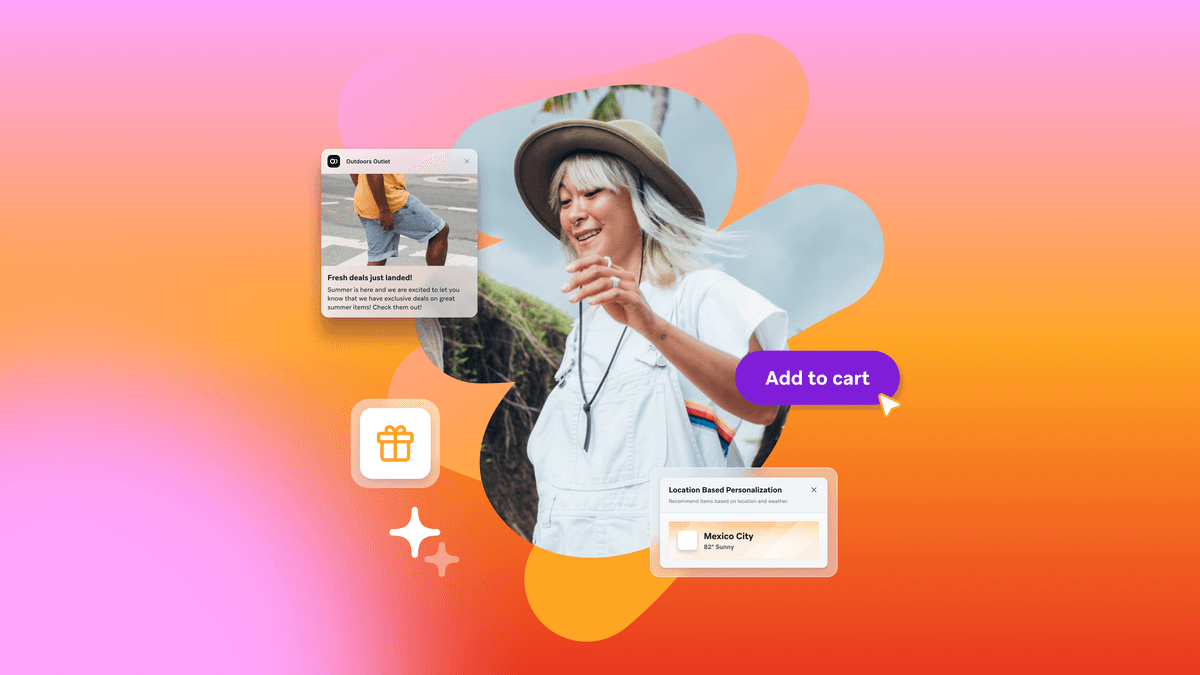What Is Customer Engagement?
Published on February 25, 2021/Last edited on February 25, 2021/7 min read


Magith Noohukhan
Product Evangelist, BrazeConsider “customer engagement.” Over the past decade, we’ve seen this term emerge from relative obscurity, becoming an essential concept for brands looking to understand, motivate, and build relationships with their users as individuals. But while the idea of customer engagement has come a long way, too many marketers aren’t clear on what it means and the impact it can have on their outreach efforts and long-term business goals.
I used to be one of them. A few years back, I struggled to understand what people meant when they talked about customer engagement. Was it mobile messaging? A fancy name for marketing? Something altogether different? As I’ve become more involved in the marketing technology space, it’s become clear to me that customer engagement is increasingly central to the work of all customer-centric brands. But more awareness and understanding of this key concept is needed.
To help out, let’s take a look at customer engagement and what makes it so significant.
Defining Customer Engagement
Before we can understand why customer engagement matters, we need to be clear on what we’re talking about when we talk about customer engagement. At Braze, we define it as follows:
Customer engagement refers to the full set of activities that companies use to build and maintain direct, meaningful relationships with their customers. Companies that excel at customer engagement see higher user lifetime value and lower acquisition costs, resulting in long-term, capital-efficient business growth. Leading companies practice effective customer engagement by delivering valuable messaging experiences to customers across all relevant channels while respecting their privacy. These brands use customer engagement technology, powered by live customer data, to listen to their customers, understand and interpret customers’ actions, and act quickly and effectively.
In concrete terms, that means that customer engagement is anything your company’s customer-facing teams are doing that supports a direct connection with your customers. That could be sending a personalized email campaign or building out a full, responsive customer journey based on each individual’s unique preferences or behaviors or a million other possible marketing campaigns or tactics.
The key is that customer engagement needs to speak directly to the user in question, rather than relying on intermediaries, and must be intended to further the relationship with that user. If you’re sending messages without considering the recipient and their individual needs, that’s not customer engagement—that’s an intrusion.
Customer Engagement Today: How We Got Here
Since 2011, we’ve seen interest and usage of “customer engagement” as a term continue to grow, reflecting an increasing focus among marketing, growth, and engagement teams on the relationships between their customers and their brand and the data, tools, and strategies they need to effectively foster those connections.

But why now? The short answer is: Because the world’s changed.
When I was growing up, I listened to music on cassette tapes, watched movies via VCRs, and went to a physical store when I wanted to buy something—whether that was groceries, clothes, home goods, or anything else. It was possible to have a relationship with an individual merchant or maybe even the staff at the local branch of a chain store, but my experience of buying most brands was moderated through the third-party retailer who resold their goods, making a direct customer/brand relationship all but impossible.
Then the landscape shifted. Starting in the 1990s, many brands saw an opportunity to open their business to a new digital platform—that is, the internet. Today, there are 7.1 million retailers selling their products online, including 1.8 million in the US alone. Suddenly, it became a lot easier to speak directly to the people visiting your website or joining your email list, making a direct relationship possible.
That shift has only sped up in the intervening years. The rise of the smartphone brought with it mobile apps and mobile messaging channels (like push notifications and in-app messages) that made it possible for any brand to speak directly and effectively to their customers on mobile, both within and beyond the app. And as the number of ways the brands could speak to their customers grew, so did the noise that came with all these digital channels and platforms and devices. Providing a cohesive, responsive direct-messaging experience that added value and understood each recipient as an individual went from a pipe dream to table stakes in the course of a few years and suddenly customer engagement wasn’t just an abstract concept—it was something that every brand had to think about.
What Best-in-Class Customer Engagement Looks Like
Over the past year, we’ve seen more and more brands taking major steps to bolster their digital presence and customer base, spurred on by the impact of COVID-19. And as businesses move increasingly online, marketing teams need to find ways to engage with users in direct, meaningful ways that they may not have had experience creating in the past. That’s a major challenge, but one that can actually improve their business results and customer relationships, as long as they prioritize the right things.
At Braze, customer engagement is at the center of what we do. And over the years, we’ve learned a lot about what works and what doesn’t when it comes to this key area of focus for brands. To see the strongest possible results, make sure your customer engagement efforts foreground the following:
1. Human Communication
Today’s consumers want to be treated like human beings. That means listening to the signals they’re sending, paying attention to their wants and needs, and then using these insights to ensure that your brand speaks to them like a regular person would. That means being thoughtful about the language you use in your outreach and taking advantage of technology to personalize the messages you send in meaningful ways.
2. Cross-Channel Messaging
There’s no one channel that can speak to all of today’s customers. Consumers have so many devices and platforms at their disposal that it’s become possible for them to curate their experience of your brand—and that’s made it essential for marketers to be able to reach users effectively on the platforms and channels that they prefer. Braze research has found that brands who take a cross-channel approach to messaging customers that includes a mix of in-product (like in-app messaging or Content Cards) and out-of-product (like push notifications and SMS) channels tend to have the highest overall performance.
3. Responsive, Data-Driven Experiences
Human communication delivered in a cross-channel way forms the foundation of effective customer engagement, but it’s not the whole story. It’s just as vital for brands to leverage the customer data at their disposal to support real-time, responsive user experiences. By triggering messages when customers take—or fail to take—key actions and prioritizing data agility to provide a holistic, live-updating view of every user, marketers can support more meaningful, effective customer journeys that drive stronger long-term business results.
Final Thoughts
Customer engagement is central to the success of your business. To ensure that brands understand the full picture of how best-in-class customer engagement can impact their customer relationships and bottom line, Braze has put together a comprehensive look on customer engagement.
The 2021 Global Customer Engagement Review leverages data from a worldwide survey of marketing decision makers conducted by Wakefield Research, in-depth analysis of Braze engagement data, and exclusive case studies from leading brands like Grubhub, GOAT, and the NBA to give a full picture of what customer engagement looks like today and how marketers can make the most of it. Check out the full review here.
Related Tags
Be Absolutely Engaging.™
Sign up for regular updates from Braze.
Related Content
View the Blog
The future of payments: Enhancing innovation and trust in a changing landscape

Erin Bankaitis

Multichannel optimization: Unlocking a more cohesive strategy for engaging customers

Team Braze

Customer engagement must-haves for peak shopping season
